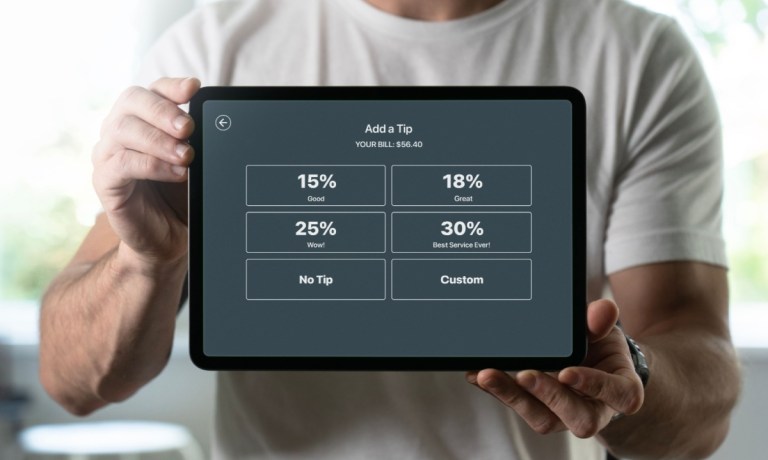
Much has been made of tipflation, the upward march of the tips paid at the table and for delivery, which adds to the bill and subtracts from diners’ wallets.
As PYMNTS Intelligence’s own reporting on the perceptions surrounding inflation shows, roughly three-quarters of consumers have been cognizant of the impact of price increases from their favorite eateries. The pinch is apparent with table service restaurants and quick-service outposts, and the read across is that delivery apps are denting consumers’ wallets, too.
The PYMNTS Intelligence data comes in the wake of retail sales data that show that spending on food services and drinking places was up about 0.3% in June, down from the previous month’s 0.4% rate.
It’s conventional wisdom to say that restaurants such as McDonald’s are at least somewhat recession proof, and that consumers will keep spending there, but as we detailed at the end of last month, the company’s comparable sales in the United States were down 0.7%. Consumers are trading down, management said on the company’s conference call. We’ll get some more incremental data on casual dining trends later this week, when Brinker International is set to report earnings.
Separately, Uber noted in its most recent earnings call that delivery revenues were up 17% year over year, which is a steady state growth rate that has been seen through the past several quarters. Uber’s website details that delivery fees, local operating fees and a dime paid for “marketplace services” are part of the equation as are courier fees in New York and California. Delivery fees are 15% of the order’s subtotal, and small order fees are $2 on orders under $10.
PYMNTS found headed into the end of the quarter that, as discussed in “Tipflation Is Changing Spending Habits of 1 in 6 Consumers,” consumers across all income groups are cutting back on spending due to tips driving up the cost of goods and services. Data showed that 29% of consumers say tipping has gotten out of hand as it seems they are universally being prompted at the point of sale to sign off on some level of suggested tipping. A full 17% of respondents to our surveys said that they have actually cut back on spending on items — including food and delivery — because the tipping aspect makes things cost too much.
The pullback is real. Consumers living paycheck to paycheck with issues paying bills have felt that prices at sit-down restaurants have soared by 32%. The perceived price hike drops to an estimated 17.3% for those consumers without issues paying bills but who still live paycheck to paycheck.
Almost all consumers in those brackets have taken actions to offset the pricing trends, which includes trading down or simply not dining out as often. Perception is everything, as they say, and right now, the tips, the fees, the surcharges and the sticky inflation are giving once-stalwart diners a bit of indigestion.